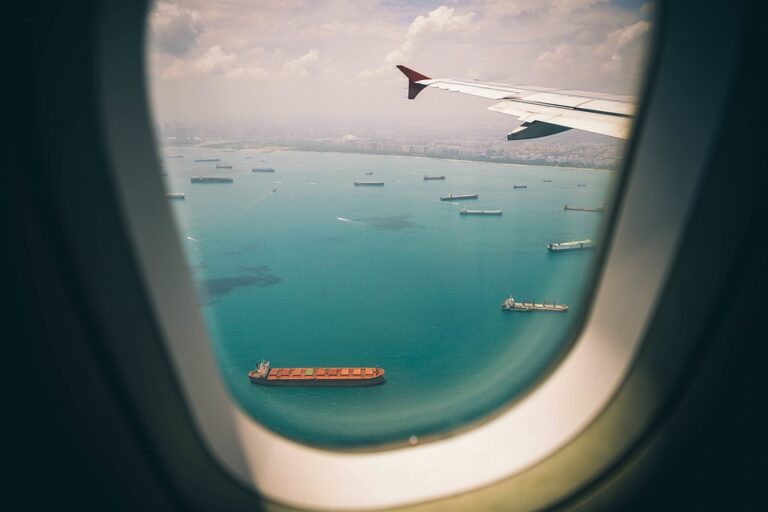Airline Safety Protocols: What Has Changed Since 2020?
The aviation industry has undergone massive transformations since the onset of the COVID-19 pandemic in 2020. The necessity for heightened safety measures has reshaped airline travel, impacting both passenger experience and operational protocols. This article breaks down the significant changes in airline safety protocols, shedding light on what travelers can expect in this new era of flying.
H2: The Impact of COVID-19 on Airline Safety
In 2020, the world witnessed an unprecedented slowdown in air travel, with a whopping 60% decrease in global passenger numbers compared to the previous year, according to the International Air Transport Association (IATA). As a response, airlines quickly adapted their safety protocols to address passenger concerns over health and safety.
H3: Enhanced Cleaning Protocols
One of the most significant changes in airline safety protocols is the implementation of rigorous cleaning measures. Airlines now conduct deep-cleaning sessions across their fleets, focusing on high-touch surfaces like tray tables, armrests, and lavatories. For example, Delta Air Lines announced its partnership with disinfecting product manufacturers to ensure their planes are treated with antimicrobial treatments, providing an additional safety layer.
H3: Air Filtration Innovations
Air quality has become a focal point in airline safety news, leading airlines to upgrade their cabin air filtration systems. Modern aircraft are equipped with HEPA (High-Efficiency Particulate Air) filters, which can capture 99.97% of airborne particles, including viruses and bacteria. According to research, the air inside an aircraft cabin is changed approximately every 2-3 minutes, making it one of the cleanest environments.
H2: New Boarding and Social Distancing Measures
While onboard safety is crucial, the boarding process has also seen significant changes aimed at reducing contact among passengers.
H3: Modified Boarding Procedures
Airlines have adopted more structured boarding methods to minimize crowding. For instance, many airlines now board from the back of the plane to the front, allowing for better distancing as passengers enter their seats. Other airlines have implemented staggered boarding groups, ensuring a smoother, less congested boarding experience.
H3: Social Distancing Signage
Throughout airports and onboard, you’ll find enhanced signage promoting social distancing. Tape markers and signs encourage passengers to maintain a safe distance during the queuing process—whether at the check-in counters or boarding gates, contributing to an overall safer travel experience.
H2: Passenger Health Screening
Another notable change in airline safety protocols involves proactive health screenings at airports.
H3: Temperature Checks
Many airlines now conduct temperature checks at airport entrances and prior to boarding to identify potentially symptomatic passengers. Alongside these checks, health questionnaires that gauge recent travel history and exposure to COVID-19 are becoming the norm.
H3: Vaccination Status Checks
As vaccination rates increase, some airlines have introduced measures requiring proof of vaccination for international travelers. For example, airlines like Qantas have announced plans to mandate vaccinations for all international flyers.
H2: Onboard Safety Measures
Beyond cleaning and screening, airlines have implemented new onboard measures to promote safety and comfort.
H3: Mask Mandates
While policies may vary by region and airline, many carriers have maintained mandatory mask-wearing policies whilst onboard. According to a survey by Airlines for America, 93% of travelers indicated that safety measures, including mask requirements, are crucial factors when choosing an airline.
H3: Changes to In-Flight Services
To reduce contact between passengers and crew, many airlines have revised their in-flight service protocols. Complimentary snacks and beverages have been replaced by pre-packaged options, while some airlines have reduced or temporarily suspended meal services.
H2: What’s Next for Airline Safety?
As the airline industry emerges from the pandemic, airlines continue to tweak their safety protocols based on passenger feedback and evolving scientific knowledge. With ongoing discussions about a potential return to pre-pandemic norms, experts believe that some safety measures will remain in place indefinitely to ensure passenger confidence.
H3: Ongoing Care for Health and Safety
Understanding the new landscape of airline travel means acknowledging that safety measures are not just temporary fixes but integral parts of the flying experience moving forward. According to J.D. Power’s 2023 North America Airline Satisfaction Study, airlines that emphasize transparency and stringent safety measures see significantly higher customer satisfaction ratings.
Conclusion: Embracing a New Era of Travel
The changes in airline safety protocols since 2020 signify a lasting shift in how we approach air travel. For passengers, understanding these transformations can instill confidence and enhance the travel experience. As we move forward, it’s essential to remain adaptable and informed about the latest developments in airline safety news.
For more insights into air travel trends and updates, check out other articles on buzzo.live, including New Innovations in Airline Technology and Traveler Tips for Safe Flying. For external perspectives, visit the International Air Transport Association for comprehensive data and information.
Images Suggestion:
-
Image Alt Text: Airline safety protocols – cabin cleaning
- Image Description: A flight attendant cleaning aircraft surfaces between flights.
- Image Alt Text: Airline safety protocols – mask mandates on planes
- Image Description: Passengers wearing masks while seated in an airplane cabin.
With these strategic changes and a commitment to enhanced safety, airlines are not just focusing on recovery; they are setting a new standard for what it means to fly safely.


